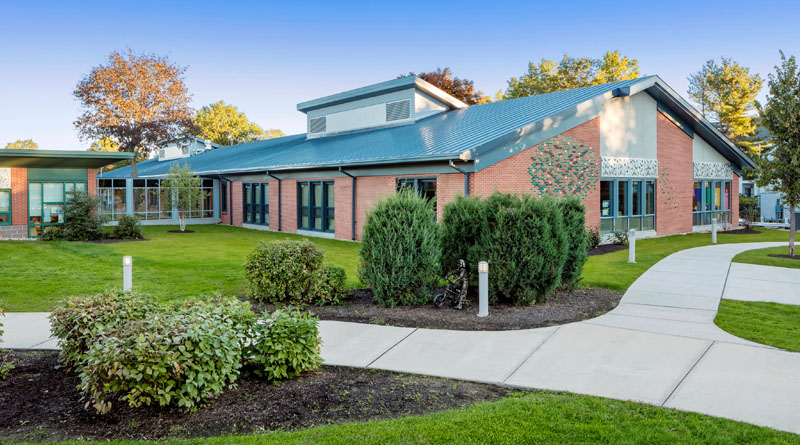Riverside Magnet School Unveils Expansion
By Roxanne Squires
HARTFORD, Conn. — Young students in New Haven can take advantage of learning in a 21st century school environment now that the new, 19,000-square-foot expansion to the existing Riverside Magnet School has reached completion.
Designed by the New Haven, Conn., office of Svigals + Partners, the new building offers inspiration through innovative learning spaces and expands the former early-childhood facility to accommodate pre-kindergarten through fifth grade students.
The project scope for Riverside Magnet School included an expansion of the existing early-childhood school — which Svigals + Partners designed and opened in 2013 — to accommodate students up to grade five and an integration of the newer facility with a 1960s-era adjacent school building.
“Being tasked with creating a state-of-the-art school in the shell of a 1960’s building was a unique challenge,” said Lynn Brtoman, NCIDQ, IIDA, associate principal at Svigals + Partners. “One important aspect of the renovation involved introducing new lighting systems and display elements for showcasing student work to enliven circulation areas.”
The integration was achieved through the application of complementary exterior building materials and unifying design motifs, successfully creating a cohesive aesthetic for the school.
Over the past five years, the Riverside Magnet School has expanded significantly and planned for additional space to house growing demand from area families. This new facility offers specialized instructional spaces for programs including instrumental music as well as additional classrooms, a project center, a new kitchen and a dividable multi-purpose room.
Both the previous building and the expansion are designed to support the Reggio Emilia teaching method, which concentrates on self-directed, experiential learning in relationship-driven environments as well as the significance of nature.
The original design of the early childhood school utilized colors found in nature and corresponding figurative sculptural elements of distinct leaf species to provide easy-to-follow wayfinding for very young children, guiding them to their assigned learning “pods.” The expansion builds on this language, creating a new identity that integrates with the existing school and supports the Reggio Emilia teaching model.
Another major design component is the new multipurpose room, which brings students and staff together and strengthens the school community.
“We were able to build upon our previous experience with the school facilitators while drawing input from new faculty, resulting in the creation of new spaces to support evolving educational practices,” said Brotman. “Flexible spaces with furniture that both students and staff can easily move and manipulate as needed supports the school’s experienced-based learning approach. Additionally, the ‘bridge’ corridor connecting the two buildings offers an ideal gallery space for projects and presentations.”
According to the school leadership, the building expansion helps support new academic and enrichment programs including an orchestral music program as well as a new project center for encouraging literacy and technology skills.
Each classroom also utilizes interactive electronic white boards. Students also have access to laptops, which they take into break out spaces such as the gallery to complete individual assignments
“Learning happens everywhere, so we focused on creating flexible spaces that would allow for growth and a variety of teaching and learning modes. Also, the media center space supports project-based learning, a current trend impacting K-12 design,” concluded Brotman.
Construction began in August 2017 and was completed in August 2018 with FIP Construction of Farmington, Conn., serving as the general contractor.

